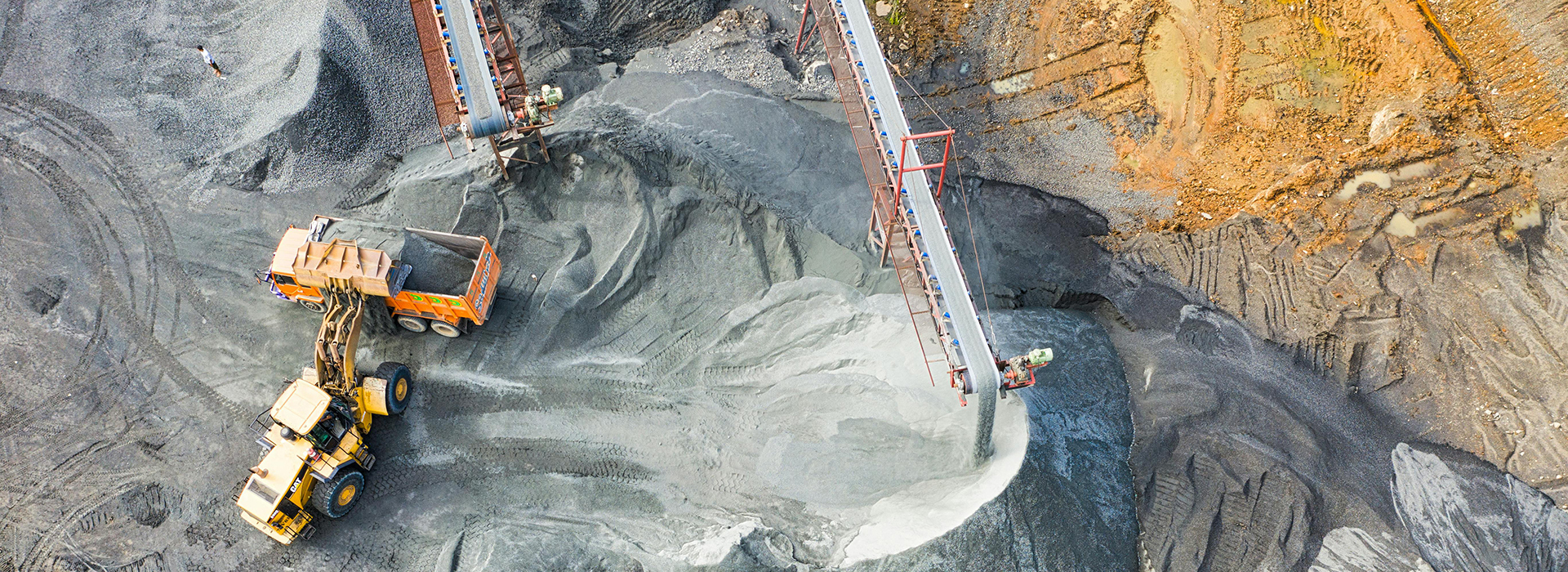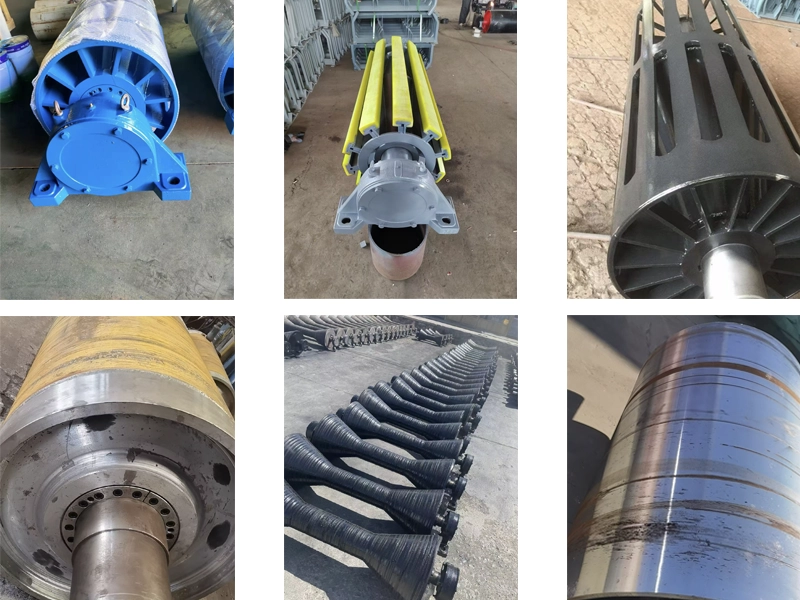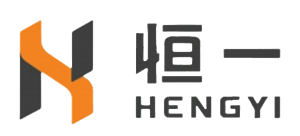
Advanced Features of Conveyor Belt Idler
2025-10-10 17:11Advanced Features
Low-Maintenance Designs
You want a conveyor system that runs smoothly with minimal downtime. Modern conveyor belt idlers now include several low-maintenance features that make your job easier. Manufacturers have moved external wear liners outside skirtboards. This change lets you inspect and replace liners quickly, without dismantling the system. You spend less time on maintenance and reduce the risk of unexpected failures.
Many Conveyor Belt Idlers now use indexing mechanisms. These mechanisms secure idlers in place and keep the belt aligned. You no longer need to use unsafe methods to adjust or maintain alignment. This design improves safety and ensures your conveyor operates efficiently.
· External wear liners placed outside skirtboards for easy inspection and replacement
· Indexing mechanisms to secure idlers and maintain proper belt alignment
Liaoning Hengyi offers Conveyor Belt Idlers with these advanced features. You benefit from less maintenance, improved safety, and longer equipment life.
Energy Efficiency
Energy costs can make up a large part of your conveyor system’s operating expenses. Energy-efficient Conveyor Belt Idlers help you save money and reduce your environmental impact. These Conveyor Belt Idlers lower rolling resistance, which means your conveyor uses less power to move materials. Some systems report up to 30% power savings, depending on the conveyor profile.
You also see longer belt life with energy-efficient designs. Customers have reported that their conveyor belts last two to three years longer than expected. This means you spend less on replacements and repairs.
According to industry leaders, energy-saving idler technology, such as Energy Saving Idlers® (ESI), directly reduces operational costs. These Conveyor Belt Idlers not only cut energy use but also extend the lifespan of conveyor components. You benefit from lower capital and operational expenses.
Tip: Choosing energy-efficient idlers helps you save money and supports your company’s sustainability goals.
Noise Reduction
Noise can be a major concern in conveyor operations, especially in indoor or urban settings. You can address this issue by selecting Conveyor Belt Idlers designed to minimize noise. Manufacturers use several technologies to achieve quieter operation.
· Low conveyor noise belts with soundproofing materials, such as acoustic surfaces, absorb noise during operation.
· Modular belt systems use interlocking modules that reduce noise generation.
· Regular maintenance, including cleaning and applying noise reduction coatings, keeps noise levels low.
You can also choose higher quality bearings with tighter tolerances. Bearings with an ABEC rating of at least 7 offer quieter performance. When you evaluate cost versus noise reduction, you may find that investing in quieter systems pays off in improved working conditions.
Liaoning Hengyi provides idlers with advanced noise reduction features. You create a safer, more comfortable environment for your team and meet regulatory requirements for noise control.
Enhanced Lifespan Materials
When you select conveyor belt idlers for your system, you want them to last as long as possible. The choice of material plays a big role in how well your idlers perform, especially in tough environments. Manufacturers now use advanced materials that help idlers resist wear, corrosion, and extreme temperatures. These materials keep your conveyor running longer and reduce the need for frequent replacements.
You often see stainless steel and specialized polymers in modern Conveyor Belt Idler designs. Stainless steel stands out in chemical plants and other harsh environments. It resists corrosion from chemicals and moisture. You do not have to worry about rust or early failure when you use stainless steel idlers. Specialized polymers also offer strong benefits. In maritime applications, these polymers resist saltwater corrosion. They also perform well in places with extreme temperatures. You can rely on them to keep working even when the weather changes quickly.
Here is a quick look at how these materials compare in different settings:
Material Type | Application Context | Benefits |
|---|---|---|
Stainless Steel | Chemical Plants | Resists corrosion from harsh chemicals |
Specialized Polymers | Maritime Applications | Provides resistance to saltwater corrosion |
Stainless Steel | General Harsh Environments | Reduces need for frequent replacements |
Specialized Polymers | Extreme Temperature Conditions | Withstands exposure to extreme temperatures |
You should match the material to your environment. If you work in a chemical plant, stainless steel idlers give you the best protection. For conveyors near the ocean or in salty air, specialized polymers keep your system safe from corrosion. In places with big temperature swings, these polymers stay strong and flexible.
Liaoning Hengyi offers Conveyor Belt Idlers made from these advanced materials. You get products that last longer and need less maintenance. This means fewer shutdowns and lower costs over time. You also improve safety because you do not have to replace worn-out parts as often.
Tip: Always check the material of your idlers before you buy. The right choice can add years to your conveyor’s life and save you money on repairs.
You can see the difference when you use enhanced lifespan materials. Your conveyor runs more smoothly, and you spend less time fixing problems. Advanced materials help you meet the demands of modern industry, even in the toughest conditions.
Maintenance and Cost
Maintenance Needs
You must keep your conveyor belt idlers in good condition to ensure reliable operation and avoid unexpected downtime. Regular maintenance helps you extend the lifespan of your equipment and reduce repair costs. You should follow a clear schedule and use the correct procedures for each type of idler.
Here is a simple checklist for maintaining your idlers:
1. Use the lubricant specified by the manufacturer.
2. Follow the recommended lubrication schedule to avoid over or under-lubrication.
3. Apply lubricant correctly so it reaches all necessary components.
4. Keep lubrication points clean before application.

You also need to check alignment and loading:
1. Ensure all pulleys are aligned and perpendicular to the belt's center line.
2. Load material centrally on the belt.
3. Make sure belt splices are square to the center line.
4. Maintain straight and level supporting structures.
5. Confirm all belt take-ups are square and can slide easily.
Regular inspection and cleaning prevent misalignment and clogging. You should evaluate mounting bolts to ensure they stay secure. These steps help you avoid costly breakdowns and keep your conveyor running smoothly.
Tip: Consistent maintenance reduces downtime and increases the lifespan of your conveyor system.
